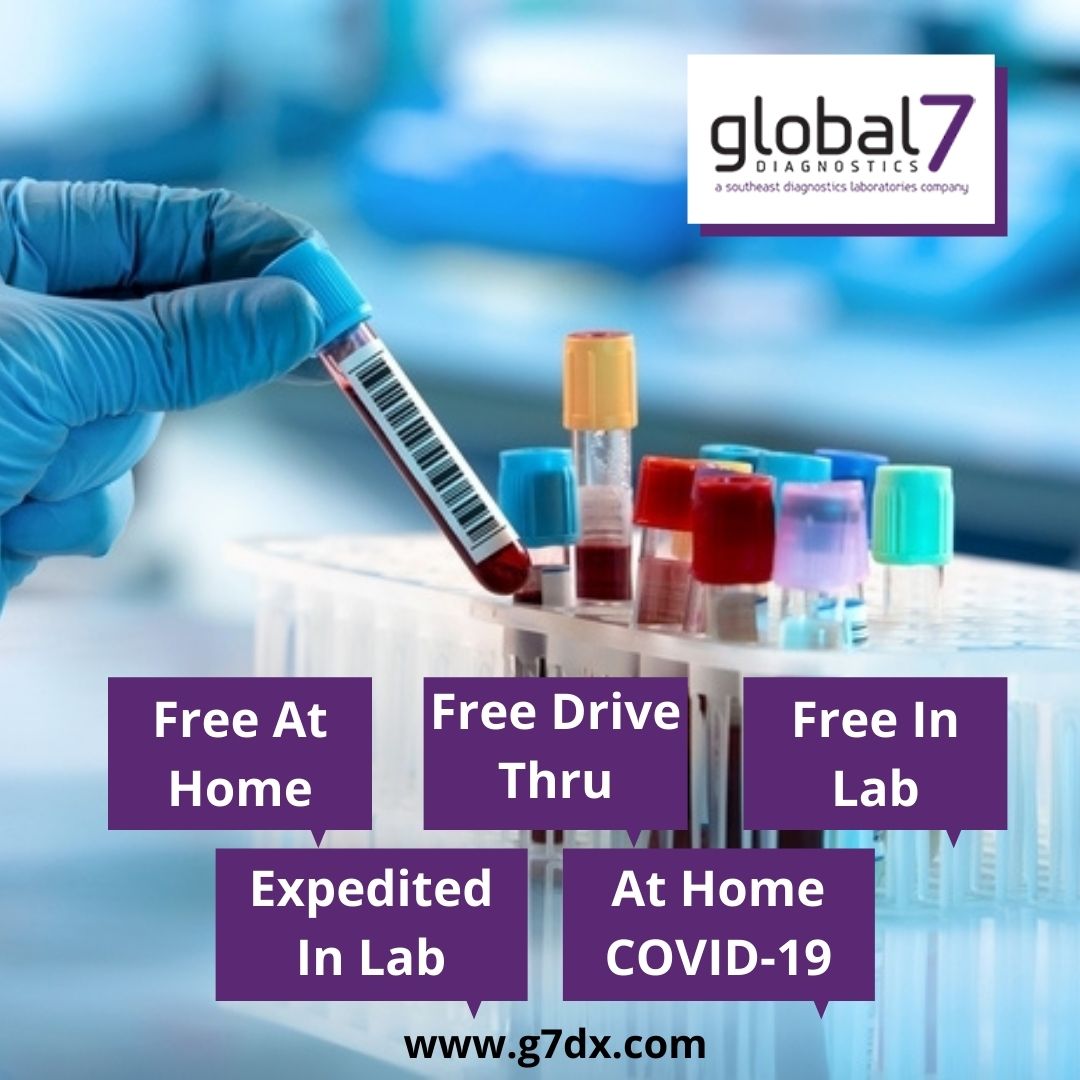
CORONAVIRUS TESTING - WHAT ARE THE DIFFERENT TYPES OF CORONAVIRUS TEST
The latest Coronavirus outbreak has gotten a lot of attention. It's easy to become perplexed because there's so much misinformation and gossip floating around. We at Global 7 Diagnostics hope to dispel any myths and provide you with correct information in this blog.

The latest Coronavirus outbreak has gotten a lot of attention. It's easy to become perplexed because there's so much misinformation and gossip floating around. We at Global 7 Diagnostics hope to dispel any myths and provide you with correct information in this blog.
So let's begin by learning more about the virus.
What is Coronavirus, exactly?
The common cold, severe acute respiratory syndrome (SARS), and Middle East respiratory syndrome are all caused by the coronavirus family of viruses (MERS). In China, a new coronavirus outbreak broke out in 2019.
SARS-CoV-2, coronavirus disease 2019, and severe acute respiratory syndrome coronavirus 2 (SARS-CoV-2) are some of the various names given to the coronavirus (COVID-19).
Coronavirus is a virus that affects both people and animals. It's possible that a virus that affects animals evolves into a new virus that infects humans. These types of coronavirus are more dangerous since they can cause life-threatening pneumonia.
What are the signs and symptoms of Coronavirus infection?
Coronavirus symptoms appear if you've travelled to locations where the virus is spreading or if you've come into touch with somebody who has travelled to such areas.
In general, coronavirus infections cause the following symptoms:
Fever \sCough
Breathing problems
Headache and sore throat
COVID-19 symptoms are less severe than those of SARS and MERS. If you haven't travelled to these locations or come into contact with somebody from there, your symptoms could be caused by another virus, such as the flu.
Asymptomatic Transmission Poses a Risk
Our most powerful weapon in the fight against the epidemic is testing and social isolation. It is the only way to stop the virus from spreading and having an impact. The asymptomatic transmission of SARS-CoV-2, on the other hand, has made curbing the disease's spread much more challenging. The fast spread of COVID-19 throughout the world is clear proof of asymptomatic transmission.
A person who is infected with COVID-19 but does not exhibit any symptoms is said to be asymptomatic. The term "asymptomatic transmission" refers to disease transmission from a person who has no symptoms.
Patients with a fever and respiratory symptoms who have an epidemiological link to COVID-19 should be treated with a high index of suspicion for the disease. The epidemiological link could be (a) travel to an outbreak area, (b) close contact with an individual with a confirmed or high risk of infection, or (c) close contact with an individual with respiratory symptoms who had been in a geographic location where an outbreak occurred within 14 days of the onset of symptoms. Clinicians must keep up to date on the list of affected nations and territories as the geographic region of engagement expands. Local transmission of disease happens after multiple generations of disease spread within a country, and patients may present with no history of travel to a known epidemic region.
Patients who are critically ill may present to the emergency department from the community or may be transferred to the intensive care unit from another hospital. In such cases, a thorough investigation should be conducted to verify that proper screening and infection control steps are taken.
How do I get a Coronavirus test?
If you believe your symptoms are caused by the coronavirus, your healthcare practitioner can contact the Centers for Disease Control and Prevention (CDC) or local health departments for testing instructions. Coronavirus tests are only performed in specified labs, therefore you may be routed to one of them.
Coronavirus testing can be performed in a variety of ways:
Swab Test - A specific swab is used to take a sample from your nose or throat in this scenario.
Nasal aspirate — A saline solution will be injected into your nose, and a sample will be collected with a mild suction.
Antigen detection-based rapid diagnostic testing
The COVID-19 has also been subjected to a fast test, which entails obtaining samples from the nose, throat, and lungs. The viral proteins (antigens) associated with the COVID-19 virus can be detected using a rapid diagnostic test (RDT) of a sample of a person's respiratory tract. This assures a quick and accurate diagnosis, and the CDC has approved its use.
Rapid diagnostic methods based on the identification of host antibodies
This test looks for antibodies in the blood of patients who have been infected with COVID-19. The strength of an antibody response is influenced by a number of factors, including age, drugs, infections, and the severity of the condition.
The worried health professionals may ask you to wear a mask during the test before you begin. The healthcare professional can inform you whether there are any additional steps that need to be taken.
What are the potential dangers of testing for Coronavirus?
When the swab is put into your nose and throat, you may experience a choking feeling. The nasal aspirate, in particular, may be unsettling. All of these side effects, however, are only transitory and will fade away soon after the test. There may be bleeding or infection after a tracheal aspirate. There are no dangers associated with the blood test. There may be some swelling and soreness in the place where the needle was inserted, but this will go away quickly.
Global 7 Diagnostics is CLIA certified laboratory Located in Norcross, Georgia, provides all these tests. For More Information Please visit - Global 7 Diagnostics





